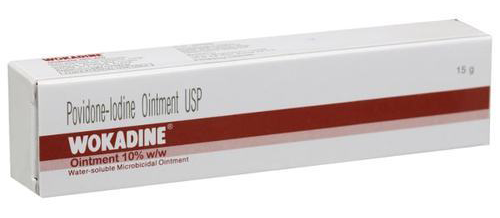Any insignificant cut or burn can turn into a real problem in case it gets infected. Betadine, which has Povidone-Iodine as its active ingredient works as an antiseptic. Thus, it prevents the infection appearance or helps to slow it down in case it is already present in the wound.
In what cases can Betadine be applied?
Betadine affects all types of infectious agents including viruses, bacteria, fungus, and fungal spores, and even some protozoa microorganisms. Due to this, the medicine may be applied for the treatment and prophylaxis of:
- Skin infections caused by bacteria and fungus;
- Vaginal yeast infection;
- Mixed and non-specific vaginal infections;
- Trichomoniasis;
- Infection of open wounds (cuts, burns);
- Pre-operative disinfection of hands and the operation area;
If compare Betadine yellow vs green bottle package, there’s no difference between the two as both contain 10% Betadine solution.
How should Betadine be applied?
The methods of using the preparation differ with respect to the localization of the infection or wound area, and the medical form of the remedy you are going to apply. Betadine is produced in the form of powder, vaginal suppositories, solution, and a number of others.
In the case of vaginal usage of Betadine, yeast infection may be cured after a week of daily administering. Insert one Betadine 200mg suppository deep into the vagina once a day before sleep. If the infection doesn’t go away during this time, the therapy may be continued for another week.
The effectiveness of Betadine yellow for acne treatment is explained by the medicine’s ability to kill the bacteria, which actually cause the spores to clog. Cleaning the area affected by acne, you can open the pores thus speeding up the healing process. As a result, your skin condition gets significantly better.
Betadine should be used as a spot treatment. Apply a thin layer of the remedy to the pimple. Make sure you’ve cleaned and dried the area before putting on the medication.
Unlike regular iodine, you may safely apply Betadine on open wounds. That’s because it contains no alcohol so, no damage to the injured tissues may be done.
Betadine may be used not only for the treatment but also for prevention of the infection. Hence, it may be useful to have it in your first aid kit.
Betadine warnings and contraindications
Because of Iodine being the key component of the medication, some people should avoid its administering. Among such patients are:
- Hyperthyroidism or some other problems with thyroid;
- An allergy to iodine or any other constituent of the remedy;
- Renal impairment.
Besides, Betadine shouldn’t be used in individuals who have undergone therapy with radioactive iodine (e.g. for thyroid carcinoma treatment). The medication may get into dangerous interactions with some other drugs and supplements, for example, its application together with lithium-containing remedies. That’s why you have to inform your healthcare provider about all the medicinal products you currently use.
When used intravaginally, Betadine may damage latex condoms. That’s why it is better to use additional methods of preventing pregnancy during and 5 days after the end of treatment with Betadine vaginal suppositories.
Because of the antiseptic properties of the drug, it can work as a spermicide. Hence, Betadine can affect female ability to get pregnant. So, you’d better not use it if you are trying to get pregnant.
Can you use Betadine in the periods of pregnancy and lactation?
Betadine active ingredients get through the placenta. And even though it doesn’t induce any danger for inborn abnormalities of the fetus, Betadine can affect the functioning of the pituitary gland of an unborn baby or make a newborn hypersensitive to iodine.
Regular use of preparation during pregnancy has a certain potential for being harmful to the baby. Yet it may be applied short-termed under medical supervision when clearly needed. One of the clinical trials held by the Hungarian scientists revealed no danger of Betadine usage in pregnant women at 37-40 weeks of gestation as the risks for developing hypothyroidism in mature fetuses is very low.
What are the possible adverse reactions to the medication?
When Betadine is applied topically, it is more likely to cause side effects when used on large areas of the skin for extended periods of time. But in the bulk of patients, it doesn’t induce any harmful effects.
Among the most frequent reactions to Betadine are:
- Stinging and burning sensations in the area where it was applied;
- Irritation or redness of the skin;
- Reactions of hypersensitivity to the medication.
In extremely rare cases, when people administer the remedy violating the doctor’s recommendations, a serious iodine intoxication is possible. It shows through:
- Metal taste in the mouth;
- Dyspepsia, diarrhea;
- Severe renal impairment, inability to produce urine;
- Eye irritation.
If you experience any of these signs turn to the nearest hospital promptly.






































